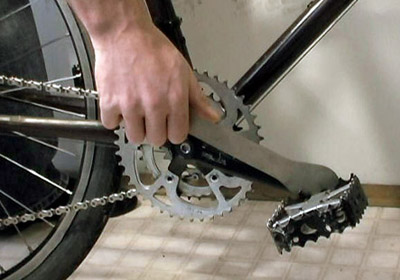Only Four Steps!
There’s a process that’s internal to any successful safety program, but unfortunately is missing in most small business H&S plans. A Plan-Do-Check-Act process ensures that there is a plan for the program to grow and become ingrained in the “How we roll around here” culture. Unfortunately, most companies have a difficult time utilizing the process.
There are only four steps! Plan, Do, Check, Act PDCA
Plan (Frame, seat, wheels, …)
Here’s the kickoff point, executed well it can engage everyone and ensure there’s a clear pathway going forward. A written plan for the program like instructions for building a bicycle.
This is the point where decisions on roles and responsibilities for all levels must be made. Plan who will do what, when? How often are inspections done on your sites? Who is going to be involved? When will they be reviewed? Communicated? You get the point, think the process through and write it down. At this point you’re writing documentation for roles and responsibilities, generating checklists, formatting inspection reports, all of which seems overwhelming to a lot of people but if you think of it as the “IKEA” portion of your company’s safety program, it’ll be easier.
Do (Let’s ride this thing)
OK, you’ve assembled the parts that your “Building a Safety Program” manual said was required (13-14 elements), you have a few parts left over and you’re not sure where they fit, but that’s ok. You have got a Safety Program bicycle that you, as a company, are going to get on and head off to work with.
You have to start using your program to see what works and this is done over a period of time, projects or locations. Start using all the forms and see what doesn’t apply or what you missed, what’s redundant, what’s irrelevant? Talk to everyone who has part of the process and ask about the good and the bad. Take a period of time that gives you a good sample and let’s head off to the next part of the process, Checking!
Check (Something ain’t right)
OK, you’ve got some momentum built up! You’ve got a pile of paper and this safety thing isn’t so bad after all. Like riding a bike, you put it together, got on, grabbed the handlebars and pushed down on the pedal. You started moving forward and then you went to push on the second pedal and nothing? Remember the few parts that you had left over in the planning stage? One of them is the pedal built from the Check/Act pieces of your program.
The Check component is where most companies’ momentum is killed. The focus is on the Do function and emphasis is placed on filling out the paper to appease everyone, clients included.
The review of the documentation is where the value of a safety program is found. The review allows you to identify what’s working and what’s not. It shows where the gaps are between levels of the company with respect to who is holding up their part and who isn’t. What has to be added to forms to customize to your operations? Remember, this isn’t simply paper generation exercise for the sake of having boxes of paper built up for the auditor every third year.
Act (that’s better)
You built the framework of your program in the Plan stage, tried it out in the Do stage and then lost all momentum when you hit the Check portion. You have to complete the check portion to allow your program the chance to keep rolling when you try to Act on the results of the review. (This is the second pedal)
Look at the program as it exists, develop and install the required/identified pieces and then you’ll be able to push the second pedal! Not a huge task, the heavy lifting was back in the “IKEA” portion.
Now you’ve built a program that has all the required pieces, in the correct position to allow you to use it going forward. Take a good look at what you’ve got at this moment, decide what can be implemented now, what will have to wait and then make it happen.
I realize that a lot of you will already have a program that you’re using and in that case I suggest starting with the Check portion of the cycle. I suggest this because you can review the documents that you’ve generated from previous work, and you don’t have to start rewriting all forms and checklists. Work with what you have, or maybe what you don’t have but need.
It all boils down to taking the time to review the results of your program at regular intervals, decide what you need to do to improve/strengthen it and taking the time, allocating resources or training employees, whatever needs are identified, make it so!
It all sounds like a lot of work, and it is. But it’s easier than riding a bike with one pedal!


0 Comments